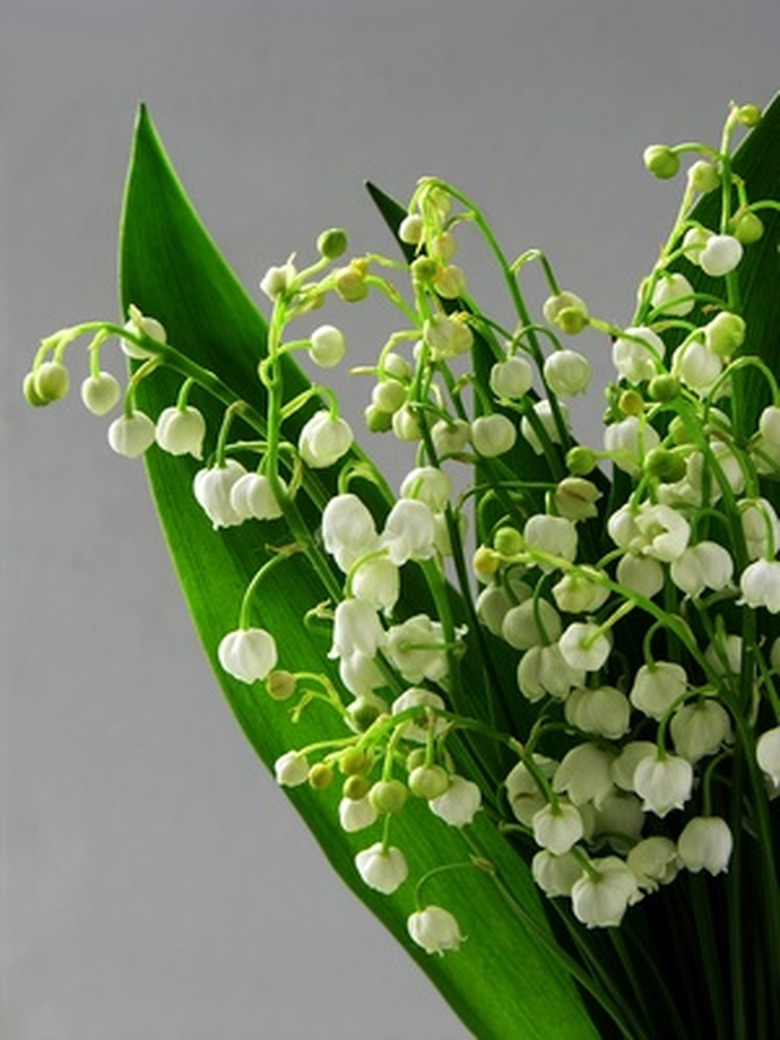Lily Of The Valley & Its Meaning
Lily of the valley (Convallaria), sometimes known as May lily or by the French name "muguet des bois," has been a favorite spring plant for centuries. It is easily identifiable by its broad green leaves, orange fall fruits and nodding white flowers. Those flowers are renowned for their fragrance, which has been used in perfumes and other products. The French celebrate muguet des bois with festivals every year in May. The blossoms were also favored by great beauties including Jacqueline Kennedy and Audrey Hepburn. Lilies of the valley have symbolic meanings, both in the Victorian "language of flowers" and in Christian legends.
The History of Flower Symbolism
Flower symbolism has a long history, going back to ancient China. It was also popular in the Ottoman Empire and may have spread from there into Europe, especially Great Britain. Queen Victoria was a great lover of flower symbolism and her enthusiasm contributed to its popularity throughout the 19th century. When Victorian propriety dictated that feelings remain unspoken, a bouquet of carefully selected flowers might safely convey sentimental messages.
- Lily of the valley (Convallaria), sometimes known as May lily or by the French name "muguet des bois," has been a favorite spring plant for centuries.
- Those flowers are renowned for their fragrance, which has been used in perfumes and other products.
Meanings
Lily of the valley has had many meanings over the centuries. Its small stature and shade-loving disposition have made it a natural symbol of humility. The sweet-smelling white flowers have been associated with the traditional feminine virtues of chastity, purity and sweetness. In the Victorian language of flowers, lily of the valley meant "return of happiness." Christians have handed down the legend of Eve's tears, which holds that when the biblical Eve wept after her expulsion from the Garden of Eden, the tears turned into lilies of the valley. The plants are sometimes also associated with the purity and chastity of the Virgin Mary.
Varieties
Experts differ on whether there is actually only one lily of the valley species, Convallaria majalis, or several that are closely related. Available varieties include plants with variegated leaves, larger white flowers or pale pink flowers.
- Lily of the valley has had many meanings over the centuries.
- The sweet-smelling white flowers have been associated with the traditional feminine virtues of chastity, purity and sweetness.
Culture
Lily of the valley is a woodland plant that likes moist soil in dappled shade. To start a patch of the fragrant flowers, purchase commercially grown pips or take a division from an established clump. Plant as soon as the soil can be worked in the spring. The first year, the plants may do little, but by the second year, they will produce flowers. The tough underground roots spread quickly and the plants can become invasive in some situations.
Warning
Despite its winsome appearance and delightful fragrance, all parts of the lily of the valley plant are poisonous. Children should be supervised if they play in areas where the plant is grown.
- Lily of the valley is a woodland plant that likes moist soil in dappled shade.
- The first year, the plants may do little, but by the second year, they will produce flowers.
References
- "The Botanical Garden"; Roger Phillips and Martyn Rix; 2002
- Language of Flowers
- Birth Flowers Guide: May Birth Flower
